
Back to selection
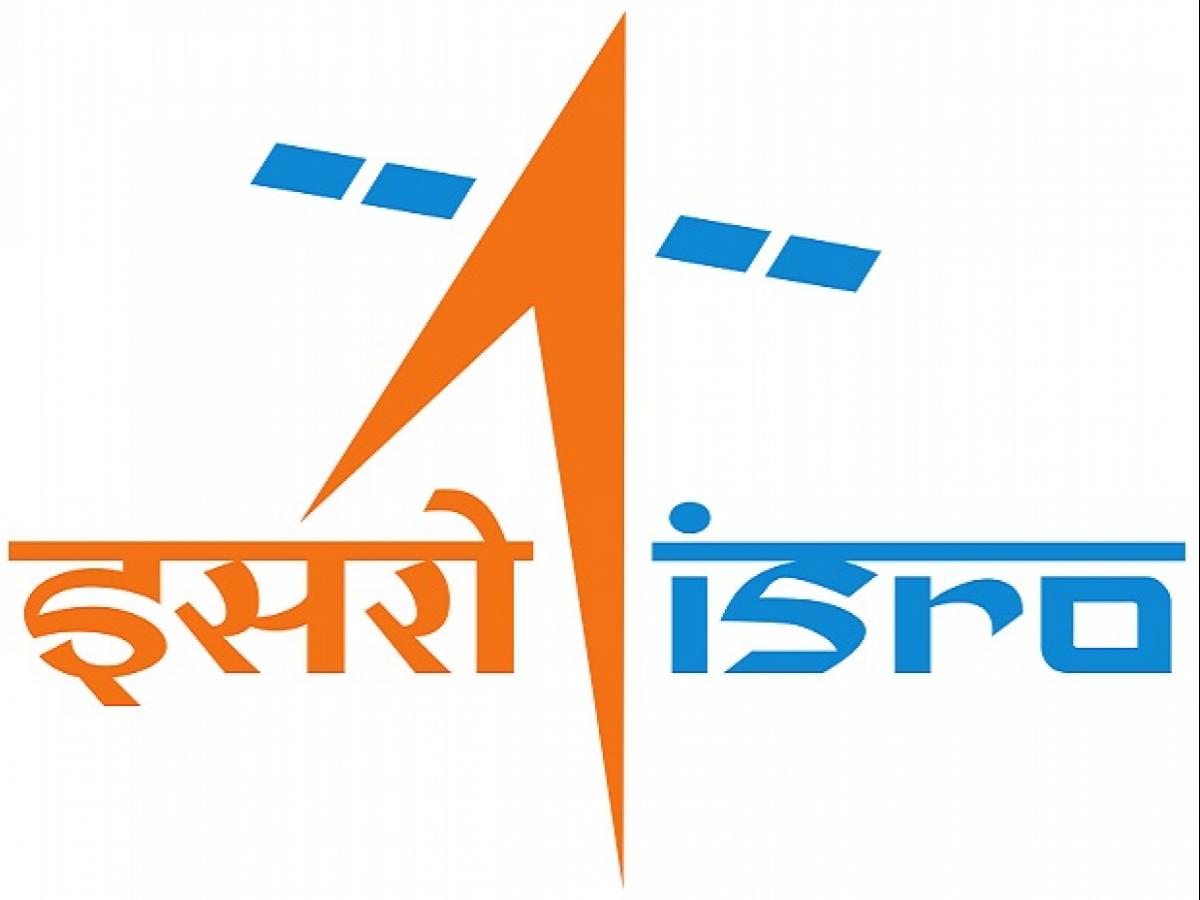
Supplier
Indian Space Research Organization (ISRO)
Indian Space Research Organization (ISRO)
Antariksh Bhavan New BEL Road
Bengaluru-560 231
India
The Indian Space Research Organization (ISRO), headquartered in Bangalore, India, is the space agency of the Indian government. ISRO construct and launches Earth observation-, communication-, navigation-, experimental and nano satellites for the Indian Government and international clients and NGO’s. ISRO conducted more than 100 successful space missions till date.
ISRO was formed in 1969 to develop an independent Indian space program and superseded the erstwhile Indian National Committee for Space Research (INCOSPAR), which was established in 1962. The establishment of ISRO institutionalized space activities in India and is managed by the Department of Space, which reports to the Prime Minister of India.
In March 2019 the Finance Minister of India established NewSpace India, Ltd. (NSIL) to scale up industry participation in Indian space programmes. NSIL is a Public Sector Undertaking (PSU) of Government of India and the commercial arm of Indian Space Research Organisation (ISRO).
Indian Space Research Organization (ISRO) operates through a countrywide network of centers. Sensors and payloads are developed at the Space Applications Centre in Ahmedabad. Satellites are designed, developed, assembled, and tested at the ISRO Satellite Centre in Bangalore. Launch vehicles are developed at the Vikram Sarabhai Space Centre in Thiruvananthapuram. Launches take place at the Satish Dhawan Space Centre on Sriharikota Island, near Chennai. The Master Control Facilities for geostationary satellite station keeping are located at Hassan and Bhopal. Reception and processing facilities for remote-sensing data are at the National Remote Sensing Centre in Hyderabad. ISRO’s commercial arm is Antrix Corporation, which has its headquarters in Bangalore.
ISRO’s first satellite, Aryabhata, was launched by Russia on April 19th 1975. Rohini, the first satellite to be placed in orbit by an Indian-made launch vehicle (Satellite Launch Vehicle 3), was launched on July 18th, 1980.
Indian Space Research Organization (ISRO) has launched several space systems, including the Indian National Satellite (INSAT) system for telecommunication, television broadcasting, meteorology, and disaster warning and the Indian Remote Sensing (IRS) satellites for resource monitoring and management. The first INSAT was launched in 1988, and the program expanded to include geosynchronous satellites called GSAT. The first IRS satellite was also launched in 1988, and the program developed more-specialized satellites, including the Radar Imaging Satellite-1 (RISAT-1, launched in 2012) and the Satellite with Argos and Altika (SARAL, launched in 2013), a joint Indian-French mission that measures ocean wave heights.
ISRO subsequently developed three other rockets:
- Polar Satellite Launch Vehicle (PSLV) for putting satellites into polar orbit,
- Geostationary Space Launch Vehicle (GSLV) for placing satellites into geostationary orbit,
- a heavy-lift version of the GSLV called the GSLV Mark III or LVM.
Those rockets launched communications satellites, Earth-observation satellites, and, in 2008, Chandrayaan-1, India’s first mission to the Moon. ISRO plans to put astronauts into orbit in 2021.
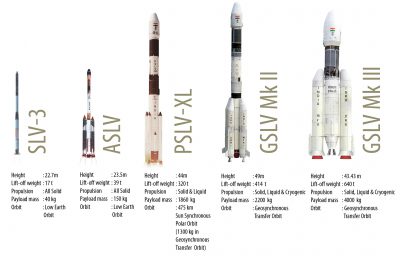
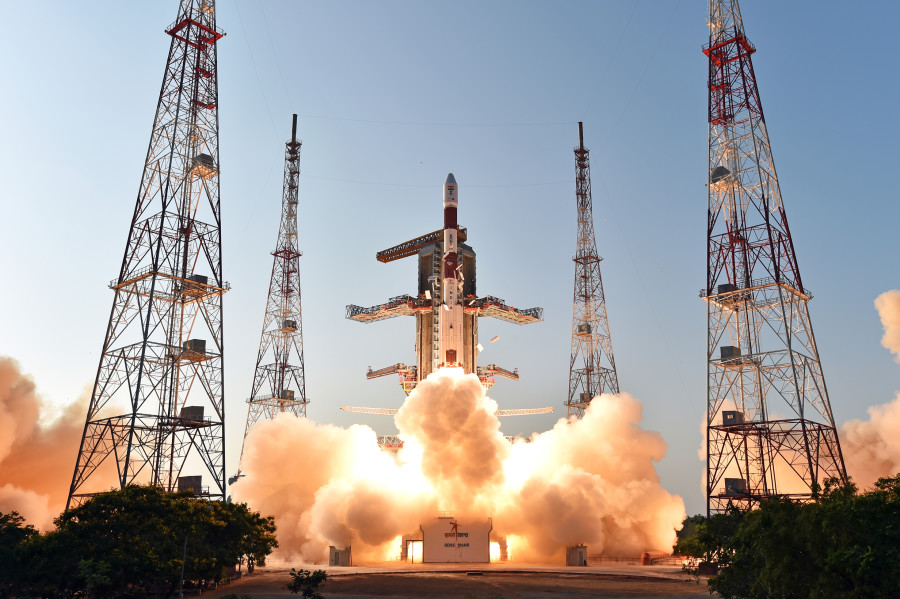
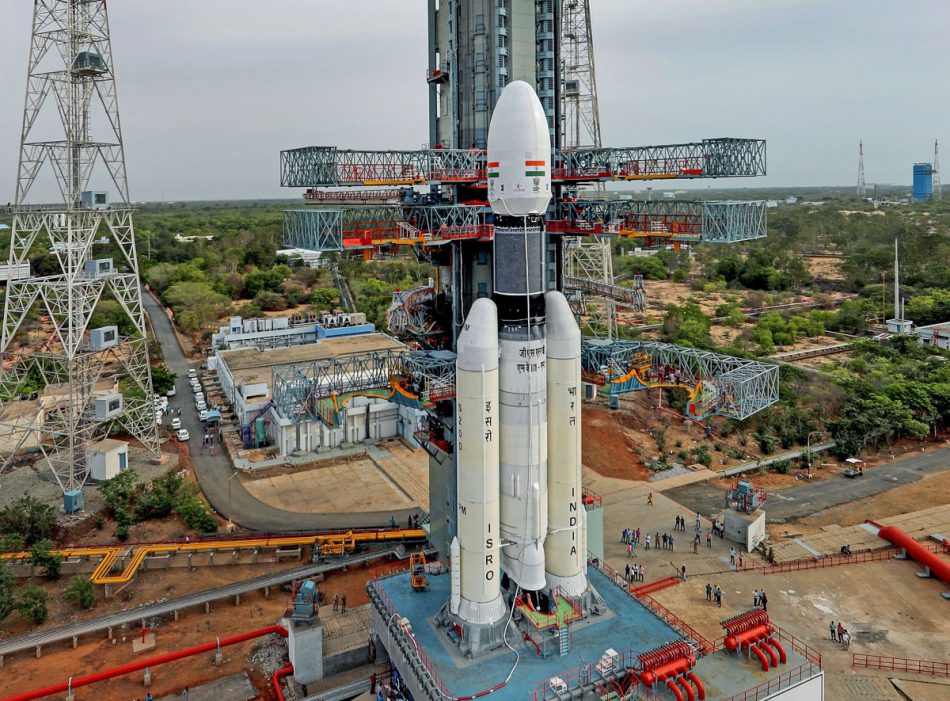
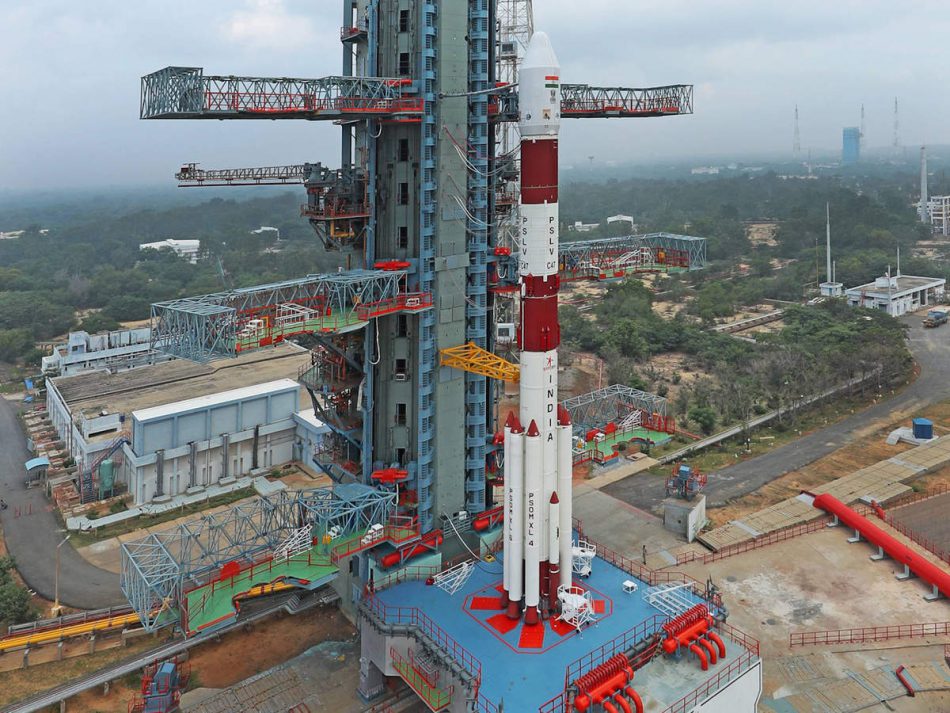
Company History
Scientist S. K. Mitra conducted a series of experiments leading to the sounding of the ionosphere by application of ground-based radio methods in Calcutta back in the 1920’s. Later, Indian scientists contributed to scientific principles applicable in space sciences but it was the period after 1945 which saw important developments being made in coordinated space research in India.
Organized space research in India was spearheaded by two scientists: Vikram Sarabhai, founder of the Physical Research Laboratory at Ahmedabad and Homi Bhabha, who established the Tata Institute of Fundamental Research in 1945. Initial experiments in space sciences included the study of cosmic radiation, high altitude and airborne testing of instruments, deep underground experimentation at the Kolar mines, one of the deepest mining sites in the world and studies of the upper atmosphere. Studies were carried out at research laboratories, universities, and independent locations.
In 1950, the Department of Atomic Energy was founded with Homi Bhabha as its secretary. The Department provided funding for space research throughout India. During this time, tests continued on aspects of meteorology and the Earth’s magnetic field, a topic which was being studied in India since the establishment of the observatory at Colaba in 1823.
In 1954, the Uttar Pradesh state observatory was established at the foothills of the Himalayas. The Rangpur Observatory was set up in 1957 at Osmania University in Hyderabad. Space research was further encouraged by the technically inclined Prime Minister of India, Jawaharlal Nehru. In 1957, the Soviet Union successfully launched Sputnik and opened up possibilities for the rest of the world to conduct a space launch.
The Indian National Committee for Space Research (INCOSPAR) was set up in 1962 by India’s first Prime Minister, Jawaharlal Nehru. The first rocket launch into space from Indian soil took place on 21 November 1963. INCOSPAR eventually transformed into ISRO in 1969.
Earth Observation Satellites
ISRO launched many operational remote sensing satellites, the first satellite was IRS-1A launched in 1988. Today, India has one of the largest constellations of remote sensing satellites in operation. Currently, 18 operational and future satellites are or will be in Sun-synchronous orbit; RESOURCESAT-1, -2 and 2A, Cartosat-1, -2, -2A and 2B, RISAT-1 and 2, Oceansat-2 and future satellite Oceansat-3, Megha-Tropiques, SARAL and SCATSAT-1, and 4 in Geostationary orbit; INSAT-3D, Kalpana & INSAT-3A and INSAT-3DR. Varieties of instruments have been flown onboard these satellites to provide necessary data in a diversified spatial, spectral and temporal resolutions to cater to different user requirements in the country and for global usage. The data from these satellites are used for several applications covering agriculture, water resources, urban planning, rural development, mineral prospecting, environment, forestry, ocean resources and disaster management.
Communication Satellites
The Indian National Satellite (INSAT) system is one of the largest domestic communication satellite systems in Asia-Pacific region with operational communication satellites placed in Geo-stationary orbit.
Established in 1983 with commissioning of INSAT-1B, it initiated a major revolution in India’s communications sector and sustained the same later. ISRO’s constellation of INSAT System consisting 18 operational satellites, namely INSAT-3A, 3C, 4A, 4B, 4CR and GSAT-6, 7, 8, 9, 10, 12, 14, 15, 16, 17, 18, 30, 31 and future satellites 20, 22, 23, 24 and 32.
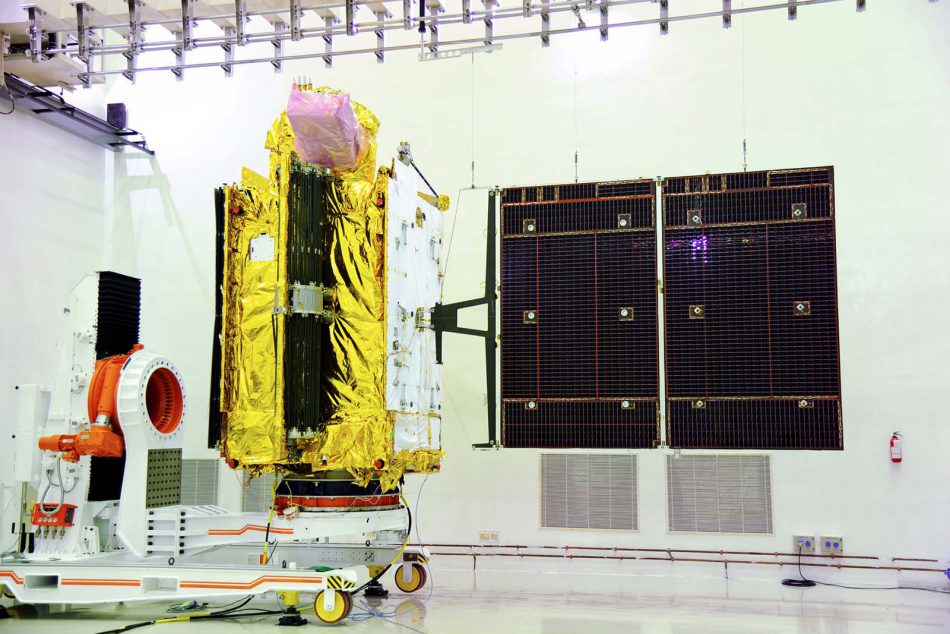
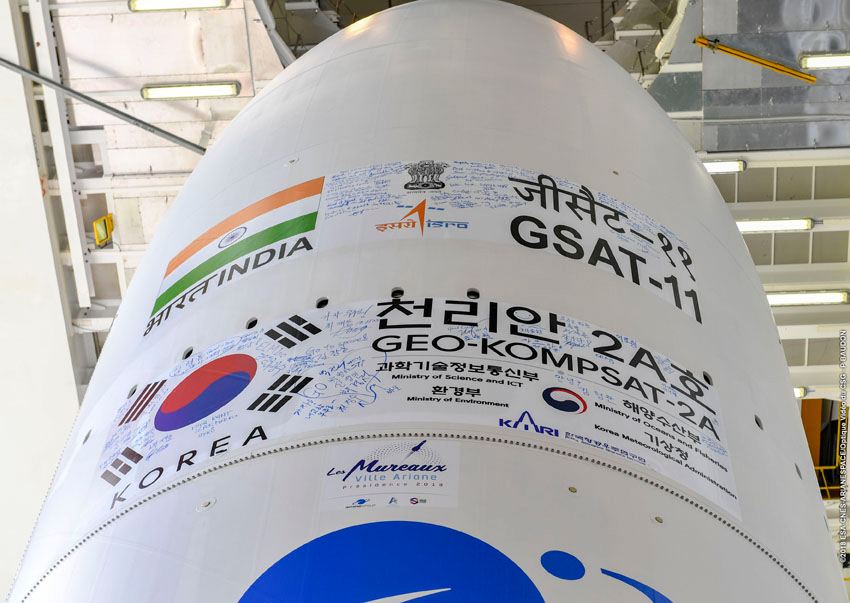
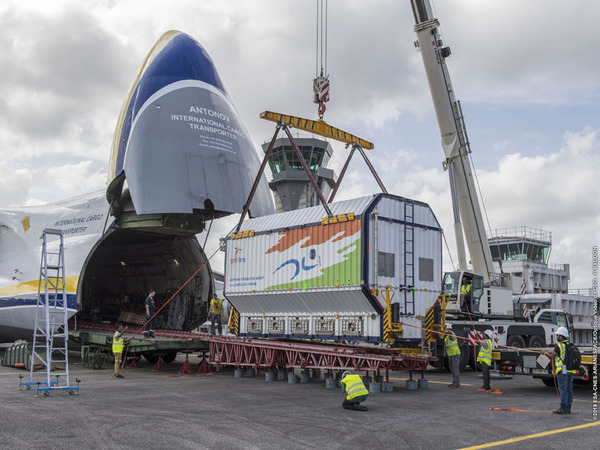
The INSAT-system with more than 200 transponders in the C, Extended C and Ku-bands provides services to telecommunications, television broadcasting, satellite news gathering SNG), societal applications, weather forecasting, disaster warning and Search and Rescue operations.
Navigation Satellites
Satellite Navigation service is an emerging satellite based system with commercial and strategic applications. ISRO is committed to provide the satellite based Navigation services to meet the emerging demands of the Civil Aviation requirements and to meet the user requirements of the positioning, navigation and timing based on the independent satellite navigation system.
To meet the Civil Aviation requirements, ISRO is working jointly with Airport Authority of India (AAI) in establishing the GPS Aided Geo Augmented Navigation (GAGAN) system. To meet the user requirements of the positioning, navigation and timing services based on the indigenous system, ISRO is establishing a regional satellite navigation system called Indian Regional Navigation Satellite System (IRNSS).
To date, ISRO has built a total of 9 satellites in the IRNSS series; of which 8 are currently in orbit and 3 of these satellites are in geostationary orbit (GEO) while the remaining in geosynchronous orbits (GSO) that maintain an inclination of 29° to the equatorial plane.
Key Dates
1962: The Indian National Committee for Space Research is formed.
1963: The first sounding rocket is launched from Thumba Equatorial Rocket Launching Station in Kerala which is used for probing upper atmospheric regions and space research. It marks the beginning of the Indian space program.
1965: Space Science and Technology Centre (SSTC) was established in Thumba.
1969: Indian Space Research Organisation (ISRO) was established.
1971: Satish Dhawan Space Centre formed in Sriharikota, Andhra Pradesh.
1975: In April the first Indian Satellite, Aryabhata was launched into space.
1980: India’s first experimental satellite vehicle was launched, Satellite Launch Vehicle-3 (SLV-3) which makes ISRO sixth nation in space program.
1982: Insat-1A communications satellite was launched by Lockheed Martin on a Delta rocket.
1983: Second developmental flight of SLV-3 placed Rohini into orbit.
1988: In July launch operator Arianespace launched INSAT-1C using an Ariane 3 rocket.
1990: On June 12th launch operator Lockheed Martin launched INSAT-1D on a Delta 4925 rocket.
1992: INSAT-2A launched by Arianespace on an Ariane 44L launcher.
1993: The Polar Space Launch Vehicle (PSLV) launcher had become ISRO’s most reliable workhorse. In 1993 PSLV carried out its first successfull mission. On July 23rd Arianespace launched INSAT-2B.
1995: Arianespace launched INSAT-2C on an Ariane 44L launch vehicle.
1997: INSAT-2D launched by Arianespace on an Ariane 44L launcher.
1999: PSLV started carrying foreign satellites, DLR-Tubsat for Germany and KitSat for Korea. In this year Arianespace launched INSAT-2E using their Ariane 42P rocket.
2000: On March 22nd Arianespace orbited INSAT-3C using an Ariane 5G rocket.
2001: Geostationary Space Launch Vehicle (GSLV) was successfully launched with payload GSAT-1 communications satellite.
2002: Kalpana-1 satellite was launched. Arianespace launched INSAT-3C in January.
2003: GSAT-2 was launched on May 8th. INSAT-3A and INSAT-3E were launched by Arianespace in April and September.
2005: INSAT-4A was launched by Arianespace in December.
2006: GSLV launched Insat-4C communications satellite.
2007: Arianespace launched INSAT-4B in March with an Ariane V rocket.
2008: India’s Chandrayaan-1 first moon mission was launched by PSLV. ISRO successfully launched 10 satellites in a single mission including Cartosat-2 and another 83 kgs mini Indian satellite, IMS-1, as well as 8 other nano satellites made by various universities.
2011: Arianespace launched GSAT-8 in May.
2012: Earth Observation Satellite RISAT-1 was launched by PSLV, which was the heaviest load on a PSLV. Arianespace orbited GSAT-10 in September.
2013: ISRO successfully launched first navigation satellite IRNSS-1A. GSAT-7 and INSAT-3D were orbited by Arianespace.
2014: India’s first interplanetary mission to the planet Mars known as Mars Orbiter Mission (MOM) or Mangalyaan was launched.
2015: ISRO launched India’s 4th navigation satellite and 5 British satellites, three disaster-monitoring satellites and two smaller experimental satellites. With total weight of 1,440 kg, making this the heaviest commercial launch ever to be undertaken by India. Arianespace launched GSAT-15 in November.
2016: GSAT-18 is launched by launch operator Arianepace in October.
2017: ISRO successfully launched 104 satellites in a single flight from Sriharikota Space Centre. On 5 May, 2017, GSLV successfully launched GSAT-19, while in June Arianespace orbited GSAT-17 from their spaceport in Kourou, French Guiana.
2018: In January the PSLV launched the 712 kg Cartosat-series Satellite along with 30 co-passenger satellites in a single flight. In December launch operator Arianespace launched GSAT-11.
2019: In February Arianespace launched ISRO’s GSAT-31 in a dual launch with Hellas-Sat 4/SaudiGeosat-1 from satellite operator Hellas-Sat from Greece.
2020: ISRO’s GSAT-30 satellite, weighing 3,400 kgs, was launched by launch operator Arianespace. The GSAT-30, launched in a dual launch with Eutelsat’s Eutelsat Konnect spacecraft, will replace 15-year-old INSAT-4A that became EOL.
All trademarks, logos and images mentioned and showed on this page are property of their respective owners.
Resources
www.isro.gov.in
www.britannica.com
www.wikipedia.org
www.youtube.com
www.aerospacenerd.com
www.jagranjosh.com
www.space.skyrocket.de
www.sankalpindia.net
www.arianespace.com
www.ndtv.com edition July 11th 2015
www.xinhuanet.com edition May 5th 2017
www.spacenews.com edition January 16th 2020

Supplier
Indian Space Research Organization (ISRO)
Indian Space Research Organization (ISRO)
Antariksh Bhavan New BEL Road
Bengaluru-560 231
India
Satellites launched by Indian Space Research Organization (ISRO)
| Spacecraft | Country | |||
| CMS-03 (GSAT-7R) | 74° East | Indian Space Research Organization (ISRO) |  | Communication |
| DemoSat-2MicroGEO | 97.4° West | Astranis |  | Experimental |
| GSAT-12GEO | 83° East | NewSpace India |  | Communication |
| GSAT-19GEO | 19° East | Indian Space Research Organization (ISRO) |  | Communication |
| GSAT-29GEO | 55° East | Indian Space Research Organization (ISRO) |  | Communication |
| GSAT-6 (INSAT-4E)GEO | 83° West | Indian Space Research Organization (ISRO) |  | Communication |
| GSAT-7AGEO | 38° East | Indian Space Research Organization (ISRO) |  | Military & Intelligence |
| GSAT-9 (South Asia Satellite)GEO | GSAT-9 (South Asia Satellite) at 97° East | Indian Space Research Organization (ISRO) |  | Communication |
| INSAT-3DSGEO | 82° East | Indian Space Research Organization (ISRO) |  | Climate & Environmental |
| IRNSS-1J (NVS-02)GEO | 111.75° East | Indian Space Research Organization (ISRO) |  | Navigation |
Satellites manufactured by Indian Space Research Organization (ISRO)
| Spacecraft | Country | |||
| CMS-03 (GSAT-7R) | 74° East | Indian Space Research Organization (ISRO) |  | Communication |
| GSAT-10GEO | 83° East | NewSpace India |  | Communication |
| GSAT-11GEO | 74° East | Indian Space Research Organization (ISRO) |  | Communication |
| GSAT-12GEO | 83° East | NewSpace India |  | Communication |
| GSAT-14GEO | 74° East | NewSpace India |  | Communication |
| GSAT-15GEO | 93° East | Indian Space Research Organization (ISRO) |  | Communication |
| GSAT-16GEO | 55° East | NewSpace India |  | Communication |
| GSAT-17GEO | 93° East | NewSpace India |  | Communication |
| GSAT-18GEO | 74° East | NewSpace India |  | Communication |
| GSAT-19GEO | 19° East | Indian Space Research Organization (ISRO) |  | Communication |
| GSAT-20 (GSAT-N2, CMS-03)GEO | 68° East | NewSpace India |  | Communication |
| GSAT-24GEO | 83° East | NewSpace India |  | Communication |
| GSAT-29GEO | 55° East | Indian Space Research Organization (ISRO) |  | Communication |
| GSAT-30GEO | 83° East | Indian Space Research Organization (ISRO) |  | Communication |
| GSAT-31GEO | 43° East | NewSpace India |  | Communication |
| GSAT-6 (INSAT-4E)GEO | 83° West | Indian Space Research Organization (ISRO) |  | Communication |
| GSAT-7 (INSAT-4F)GEO | 74° West | Indian Space Research Organization (ISRO) |  | Communication |
| GSAT-7AGEO | 38° East | Indian Space Research Organization (ISRO) |  | Military & Intelligence |
| GSAT-8 (INSAT-4G)GEO | 55° East | Indian Space Research Organization (ISRO) |  | Communication |
| GSAT-9 (South Asia Satellite)GEO | GSAT-9 (South Asia Satellite) at 97° East | Indian Space Research Organization (ISRO) |  | Communication |
| INSAT-2DGEO | 93.5° East | Indian Space Research Organization (ISRO) |  | Communication |
| INSAT-3AGEO | 93.5° East | Indian Space Research Organization (ISRO) |  | Communication |
| INSAT-3BGEO | 83° East | Arianespace |  | Communication |
| INSAT-3CGEO | 93.5° East | Indian Space Research Organization (ISRO) |  | Communication |
| INSAT-3DSGEO | 82° East | Indian Space Research Organization (ISRO) |  | Climate & Environmental |
| INSAT-4AGEO | 83° East | Indian Space Research Organization (ISRO) |  | Communication |
| INSAT-4BGEO | 85° East | Indian Space Research Organization (ISRO) |  | Communication |
| IRNSS-1J (NVS-02)GEO | 111.75° East | Indian Space Research Organization (ISRO) |  | Navigation |
Satellite fleet by Indian Space Research Organization (ISRO)
| Spacecraft | Country | |||
| CMS-03 (GSAT-7R) | 74° East | Indian Space Research Organization (ISRO) |  | Communication |
| GSAT-11GEO | 74° East | Indian Space Research Organization (ISRO) |  | Communication |
| GSAT-15GEO | 93° East | Indian Space Research Organization (ISRO) |  | Communication |
| GSAT-19GEO | 19° East | Indian Space Research Organization (ISRO) |  | Communication |
| GSAT-29GEO | 55° East | Indian Space Research Organization (ISRO) |  | Communication |
| GSAT-30GEO | 83° East | Indian Space Research Organization (ISRO) |  | Communication |
| GSAT-6 (INSAT-4E)GEO | 83° West | Indian Space Research Organization (ISRO) |  | Communication |
| GSAT-7 (INSAT-4F)GEO | 74° West | Indian Space Research Organization (ISRO) |  | Communication |
| GSAT-7AGEO | 38° East | Indian Space Research Organization (ISRO) |  | Military & Intelligence |
| GSAT-8 (INSAT-4G)GEO | 55° East | Indian Space Research Organization (ISRO) |  | Communication |
| GSAT-9 (South Asia Satellite)GEO | GSAT-9 (South Asia Satellite) at 97° East | Indian Space Research Organization (ISRO) |  | Communication |
| INSAT-2DGEO | 93.5° East | Indian Space Research Organization (ISRO) |  | Communication |
| INSAT-3AGEO | 93.5° East | Indian Space Research Organization (ISRO) |  | Communication |
| INSAT-3CGEO | 93.5° East | Indian Space Research Organization (ISRO) |  | Communication |
| INSAT-3DSGEO | 82° East | Indian Space Research Organization (ISRO) |  | Climate & Environmental |
| INSAT-4AGEO | 83° East | Indian Space Research Organization (ISRO) |  | Communication |
| INSAT-4BGEO | 85° East | Indian Space Research Organization (ISRO) |  | Communication |
| IRNSS-1J (NVS-02)GEO | 111.75° East | Indian Space Research Organization (ISRO) |  | Navigation |

Supplier
Indian Space Research Organization (ISRO)
Indian Space Research Organization (ISRO)
Antariksh Bhavan New BEL Road
Bengaluru-560 231
India
Rideshare missions by Indian Space Research Organization (ISRO)
| Rideshare Mission | Launch date | Launch vehicle | Spacecraft launched | Orbit |
| PSLV-C60 / SpaDeX | 30 December 2024 | PSLV | 3 | LEO |
| SSLV-D3 / EOS-08 | 16 August 2024 | SSLV | 2 | LEO |
| PSLV-C58 / XPoSat | 1 January 2024 | PSLV | 2 | LEO |
| PSLV-C56 / DS-SAR | 30 July 2023 | PSLV | 8 | SSO |
| LVM3-M4 / Chandrayaan-3 | 14 July 2023 | GSLV | 2 | LEO |
| PSLV-C55 / TeLEOS-2 | 22 April 2023 | PSLV | 3 | LEO |
| SSLV-D2 / EOS-07 | 10 February 2023 | SSLV | 3 | LEO |
| SSLV-D1 / EOS-02 | 7 August 2022 | SSLV | 2 | LEO |
| PSLV-C52 / EOS-04 | 14 February 2022 | PSLV | 3 | LEO |
| GSLV-Mk III – M1 / Chandrayaan-2 | 22 July 2019 | GSLV | 2 | LEO |
| PSLV-C45 / EMISAT | 1 April 2019 | PSLV | 29 | SSO |
| PSLV-C44 / Microsat-R | 24 January 2019 | PSLV | 2 | LEO |
| PSLV-C43 / HysIS | 29 November 2018 | PSLV | 31 | SSO |
| PSLV-C42 / NOVASAR | 16 September 2018 | PSLV | 2 | SSO |
| PSLV-C40 / CARTOSAT-2F | 12 January 2018 | PSLV | 32 | SSO |
| PSLV-C38 / CARTOSAT-2 | 23 June 2017 | PSLV | 31 | SSO |
| PSLV-C37 / CARTOSAT-2D | 15 February 2017 | PSLV | 104 | SSO |
| PSLV-C35 / SCATSAT-1 | 16 September 2016 | PSLV | 8 | LEO |
| PSLV-C34 / CARTOSAT-2C | 22 June 2016 | PSLV | 20 | SSO |
| PSLV-C29 / TeLEOS-1 | 16 December 2015 | PSLV | 6 | LEO |
| PSLV-C30 / ASTROSAT | 28 September 2015 | PSLV | 7 | GTO |
| PSLV-C28 / DMC3 | 10 July 2015 | PSLV | 5 | LEO |
| PSLV-C23 / SPOT-7 | 30 June 2014 | PSLV | 6 | SSO |
| PSLV-C20 / SARAL | 25 February 2013 | PSLV | 7 | SSO |
| PSLV-C21 / SPOT-6 | 9 September 2012 | PSLV | 3 | SSO |
| PSLV-C18 / Megha-Tropiques | 12 October 2011 | PSLV | 4 | SSO |
| PSLV-C16 / ResourceSat-2 | 20 April 2011 | PSLV | 3 | SSO |
| PSLV-C15 / CARTOSAT-2B | 12 July 2010 | PSLV | 5 | SSO |
| PSLV-C14 / OCEANSAT-2 | 23 September 2009 | PSLV | 7 | SSO |
| PSLV-C11 / Chandrayaan-1 | 22 October 2008 | PSLV | 2 | LEO |
| PSLV-C9 / CARTOSAT-2A/IM-1 | 28 April 2008 | PSLV | 10 | SSO |
| PSLV-C8 / AGILE | 23 April 2007 | PSLV | 2 | SSO |
| PSLV-C7 / CARTOSAT-2/SRE | 10 January 2007 | PSLV | 4 | SSO |
| PSLV-C6 / CARTOSAT-1/HAMSAT | 5 May 2005 | PSLV | 2 | SSO |
| PSLV-C2 / IRS-P4 | 26 May 1999 | PSLV | 3 | SSO |

Supplier
Indian Space Research Organization (ISRO)
Indian Space Research Organization (ISRO)
Antariksh Bhavan New BEL Road
Bengaluru-560 231
India
Dedicated missions by Indian Space Research Organization (ISRO)
| Dedicated Mission | Launch date | Launch vehicle | Orbit |
| LVM3-M5 / GSAT-7R | 2 November 2025 | LVM3 Mark III | GEO |
| GSLV-F16 / NISAR | 30 July 2025 | GSLV | LEO |
| PSLV-C61 / EOS-09 | 18 May 2025 | PSLV | SSO |
| GSLV-F15 / NVS-02 | 29 January 2025 | GSLV | GEO |
| GSLV-F14 / INSAT-3DS | 17 February 2024 | GSLV | GTO |
| PSLV-C57 / Aditya-L1 | 2 September 2023 | PSLV | LEO |
| GSLV-F12 / NVS-01 | 29 May 2023 | GSLV | GEO |
| GSLV-F10 / EOS-03 | 14 February 2022 | GSLV | GEO |
| PSLV-C46 / RISAT-2B | 22 May 2019 | PSLV | LEO |
| GSLV-F11 / GSAT-7A | 19 December 2018 | GSLV | GEO |
| GSLV Mk III-D2 / GSAT-29 | 14 November 2018 | GSLV | GEO |
| PSLV-C41 / IRNSS-1I | 12 April 2018 | PSLV | GEO |
| PSLV-C39 / IRNSS-1H | 31 August 2017 | PSLV | GEO |
| GSLV Mk III-D1 / GSAT-19 | 5 June 2017 | GSLV | GEO |
| GSLV-F09 / GSAT-9 | 5 May 2017 | GSLV | GEO |
| PSLV-C36 / RESOURCESAT-2A | 7 December 2016 | PSLV | SSO |
| PSLV-C33 / IRNSS-1G | 28 April 2016 | PSLV | GEO |
| PSLV-C32 / IRNSS-1F | 10 March 2016 | PSLV | GEO |
| PSLV-C31 / IRNSS-1E | 20 January 2016 | PSLV | GEO |
| PSLV-C27 / IRNSS-1D | 28 March 2015 | PSLV | GEO |
| PSLV-C26 / IRNSS-1C | 16 October 2014 | PSLV | GEO |
| PSLV-C24 / IRNSS-1B | 4 April 2014 | PSLV | GEO |
| GSLV-D5 / GSAT-14 | 5 January 2014 | GSLV | GEO |
| PSLV-C22 / IRNSS-1A | 1 July 2013 | PSLV | GEO |
| PSLV-C19 / RISAT-1 | 26 April 2012 | PSLV | SSO |
| PSLV-C17 / GSAT-12 | 15 July 2011 | PSLV | GEO |
| PSLV-C12 / RISAT-2 | 20 April 2009 | PSLV | SSO |
| PSLV-C10 / TECSAR | 21 January 2008 | PSLV | SSO |
| GSLV-F01 / EDUSAT (GSAT-3) | 20 September 2004 | GSLV | GEO |
| PSLV-C5 / RESOURCESAT-1 | 17 October 2003 | PSLV | SSO |
| PSLV-C3 / TES | 22 October 2001 | PSLV | SSO |